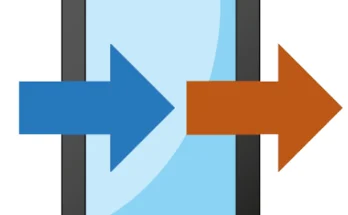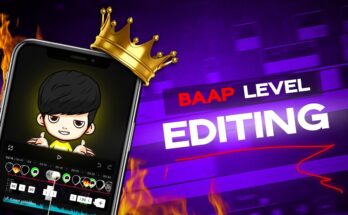The Rise of AI-Generated Images:
The rapid advancement of artificial intelligence (AI) has brought forth a wide array of groundbreaking applications, one of which is AI-generated imagery. From breathtaking works of art to hyper-realistic photo manipulations, AI is transforming the way we create, perceive, and interact with visual content. AI-generated images have sparked conversations across industries, from digital art and entertainment to marketing and design. In this article, we explore the technology behind AI-generated images, their various applications, the ethical implications, and their future impact on creative industries.
What Are AI-Generated Images?
AI-generated images are visuals created using algorithms and machine learning models, rather than traditional methods of photography, painting, or graphic design. These images are produced by training AI models on vast datasets of images to recognize patterns, textures, shapes, and other visual elements. Through this process, AI can generate entirely new, often photorealistic images or creative renderings based on input prompts or predefined parameters.
A popular method for creating AI images involves the use of generative adversarial networks (GANs). GANs consist of two neural networks: a generator and a discriminator. The generator creates images, while the discriminator evaluates them against real images, providing feedback. Over time, the generator becomes better at producing realistic images that can fool the discriminator. This process enables the AI to produce images that are indistinguishable from human-created ones.
Another widely used method is diffusion models, which work by starting with random noise and gradually refining it to generate coherent images. Models such as OpenAI’s DALL-E 2, Google’s Imagen, and Stability AI’s Stable Diffusion have become famous for their ability to create stunning images from simple text prompts, pushing the boundaries of what is possible with AI in the visual arts.
The Applications of AI-Generated Images
1. Art and Creativity
One of the most prominent uses of AI-generated images is in the field of digital art. Artists and designers now have powerful tools at their disposal that allow them to push creative boundaries and experiment with styles and forms in ways that were previously unimaginable. AI can assist artists in generating unique concepts, textures, and compositions, sparking fresh ideas for their work.
AI-generated images can range from abstract, surreal pieces to photorealistic representations of imaginary worlds. This has led to the rise of AI-generated art being showcased in galleries, auctioned at high prices, and even used in mainstream media campaigns. These AI-powered tools democratize art creation by enabling individuals with limited artistic skills to create high-quality visuals quickly and easily.
2. Marketing and Advertising
In the world of marketing, the ability to generate high-quality images tailored to specific campaigns is a game-changer. AI-generated images allow marketers to create visually striking content without the need for expensive photoshoots or graphic design teams. Brands can create product mockups, digital advertisements, and social media posts in seconds.
Personalization is another area where AI-generated images shine. By analyzing customer data, AI models can generate images that resonate with specific target audiences, creating more engaging and effective marketing materials. AI-driven platforms like Runway ML and Artbreeder are already being used by businesses to streamline their content creation process, saving both time and money.
3. Gaming and Entertainment
The gaming and entertainment industries have also embraced AI-generated images to enhance the realism and creativity of their content. AI models are used to generate characters, environments, and objects in video games, ensuring that every asset fits seamlessly into the game world. This significantly reduces the time and cost associated with manual design work.
In film production, AI-generated images can be used for visual effects (VFX) and concept art. Filmmakers can create detailed and realistic CGI scenes without the need for extensive human labor. The potential for AI to enhance animation, character design, and visual storytelling is immense, allowing creators to bring their visions to life more quickly and efficiently.
4. Fashion and Design
AI-generated images have made waves in the fashion industry, where designers are using AI to create new clothing patterns, digital fashion shows, and virtual wardrobes. AI tools can generate endless variations of fashion designs based on input criteria, such as color, texture, and silhouette. This allows designers to explore different styles and trends without having to physically create each piece.
In interior design, AI-generated images are also being used to visualize potential layouts, furniture arrangements, and decor choices. These images help designers and clients make more informed decisions, ensuring that spaces are optimized for both aesthetics and functionality.
5. Healthcare and Medical Imaging
AI-generated images are increasingly playing a role in healthcare, particularly in medical imaging. Through machine learning, AI can generate synthetic medical images that mimic the visual characteristics of real scans, such as X-rays or MRIs. These images can be used to train AI systems for diagnostic purposes, improving the accuracy of medical imaging tools without the need for large datasets of real patient data.
AI-generated imagery is also helping in the development of new drug therapies and medical treatments. By simulating molecular structures and biological systems, AI can assist researchers in visualizing potential treatments or cures, accelerating the process of drug discovery.
Ethical Concerns and Challenges
While the potential of AI-generated images is vast, the technology raises several ethical and societal concerns. These concerns are primarily related to the implications of AI-created content on authorship, ownership, and authenticity.
1. Copyright and Ownership
As AI-generated images become more common, the question of copyright and intellectual property becomes increasingly complicated. Who owns the rights to an image created by an AI? Is it the person who provided the input prompt or the creators of the AI model? These questions have led to legal debates about the ownership of AI-generated content and the potential for infringement on human creators’ intellectual property rights.
Moreover, AI-generated images can sometimes be created using datasets that include copyrighted material. This raises concerns about whether AI tools are inadvertently infringing on the rights of artists and photographers whose work has been used to train the models.
2. Deepfakes and Misinformation
One of the most controversial applications of AI-generated imagery is in the creation of deepfakes—hyper-realistic images or videos that manipulate existing content to create misleading or harmful representations of people. Deepfakes can be used to create fake news, spread misinformation, or damage reputations, making it increasingly difficult to trust visual content online.
The rise of deepfakes has prompted calls for stricter regulation and the development of AI tools to detect and counteract this type of content. While AI has the potential to revolutionize the way we create and consume media, it also requires careful consideration to prevent its misuse.
3. Bias and Representation
AI models are only as good as the data they are trained on, and if that data is biased, the resulting images may also reflect those biases. For example, AI-generated faces or bodies may disproportionately represent certain races, genders, or body types while underrepresenting others. This issue can perpetuate harmful stereotypes and limit the diversity of visual representation in media.
Ensuring that AI models are trained on diverse, inclusive datasets is crucial to avoid reinforcing existing biases and fostering a more equitable representation of all groups in visual content.
4. The Devaluation of Human Creativity
Another concern is the potential devaluation of human creativity. As AI becomes more capable of generating realistic and innovative images, there is fear that human artists may be replaced by machines. However, many argue that AI should be seen as a tool that enhances human creativity rather than a replacement for it. AI can assist artists in the creative process, allowing them to focus on higher-level decision-making and storytelling.
Despite this, the widespread use of AI-generated images in commercial sectors could lead to a reduction in demand for traditional artistic labor, particularly in industries where visuals are a key product, such as advertising, marketing, and design.
The Future of AI-Generated Images
The future of AI-generated images is both exciting and uncertain. As AI technology continues to advance, the capabilities of AI-generated imagery will only improve. We can expect to see even more lifelike, immersive, and creative visuals across a range of industries, from entertainment to healthcare. AI will likely become an indispensable tool for artists, designers, and content creators, enabling them to push the boundaries of what is possible in visual media.
However, the ethical challenges posed by AI-generated images will require ongoing attention. Striking a balance between innovation and responsible use will be key to ensuring that the technology is used for the benefit of society rather than to cause harm.
●Download App
●Face Swap
Ultimately, AI-generated images are reshaping the creative landscape, opening up new possibilities for art, design, and communication. As the technology continues to evolve, it will be fascinating to see how AI and human creativity can work together to redefine the future of visual content.


